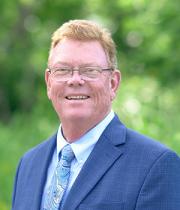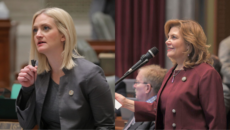Clean energy is becoming a major talking point across the country, with businesses and states committing to lofty clean energy goals decades down the road. The sector is booming in Missouri as well thanks to cooperation between producers, legislators, and the government, according to Missouri Division of Energy Director Craig Redmon.
Gov. Mike Parson declared Sept. 20-24 Missouri Clean Energy Week this year, running alongside National Clean Energy Week.
Parson’s declaration said the sector makes up the state’s third-largest workforce and noted the Callaway Nuclear Generating Station, the state’s only nuclear power plant, generated 11 percent of the power used last year.
The Republican chief executive also touted the state’s biodiesel production capacity, the third-largest in the nation.
Whereas Illinois recently enacted a new law putting the state on a path to 50 percent renewable energy by 2050, Missouri stakeholders are setting their own goals without the use of mandates. Redmon said Missouri could keep up with others by letting the market’s shift to cleaner energy standards drive the transition.
“We’re working hard for clean energy here in Missouri, and we’re making as much progress without trying to mandate things to utilities — we try to be their partner, and it’s an approach I think we all like,” Redmon told The Missouri Times. “I think Missouri’s in a good place; we try not to dictate what changes we have to make, and I think that’s what’s best for our citizens. We’re falling into step, and we’ll get there in a much more efficient way for everyone.”

As Redmon noted, investor-owned utility companies have taken the lead in Missouri.
Ameren committed to $8 billion in clean energy investments over the next 20 years as part of its effort to achieve net-zero carbon emissions by 2050; the company is upping its investment in wind and solar generation facilities and hopes to retire its coal plants in the next two decades.
“Our plan takes into consideration environmental stewardship, system reliability, and customer affordability while utilizing the very low-cost generation that our customers enjoy today as a path enabling us to add greater levels of wind and solar resources now and in the future,” Ajay Arora, Ameren Missouri’s chief renewable energy officer, said. “We look forward to continuing our work with stakeholders throughout the state, including regulators and legislators, to advance Ameren Missouri’s plan for a brighter energy future for all Missourians.”
Other utilities are focused on clean energy as well: Evergy Senior Director of Government Affairs and Economic Development Jason Klindt said 50 percent of Evergy’s delivered energy is carbon-free and comes from renewable and nuclear generation.
A focus on renewable power could benefit the state’s workforce as well, Redmon said. More than 51,500 Missourians were working in clean energy by the end of 2020 despite a downturn in the face of the pandemic, according to a report from Environmental Entrepreneurs (E2) and the Clean Energy Trust. The report also said Missouri had one of the fastest-growing renewable energy sectors in the nation.
Redmon said one of Missouri’s biggest obstacles was storage. While there is no shortage of investments into clean generation and emerging technology, he said capacity needed to keep up with demand.
“The wind doesn’t always blow, and the sun doesn’t always shine, but you’ve still got to have a reliable source of energy to make sure that when you turn a light switch on or you’re trying to run a hospital, you’ve got a constant, secure resource,” Redmon said. “As soon as we get more storage capacity, you’ll see an even greater push toward clean energy.”
The division is focusing its efforts on ways clean energy can benefit Missourians financially. The Low Income Weatherization Assistance Program (LIWAP) grants eligible households energy-efficient devices to keep their bills down, and schools and businesses can apply for the division’s loan program to help them make the switch to cheaper, cleaner power.
Redmon also pointed to the legislature’s efforts to encourage the use of clean energy without requiring it: One piece of legislation signed into law this year allowed utility companies to request authority from the Public Service Commission (PSC) to issue bonds to finance energy transition costs, also known as securitization, among a bevy of other utility policies. Other bills would have created cost-recovery programs for the production of renewable fuel and a biodiesel fuel minimum.
While he didn’t venture to guess what the state’s clean energy sector will look like three decades from now, Redmon said Missouri was primed to continue leading the charge with all stakeholders willing to take a seat at the table.
“Other states are setting these lofty goals as far as where they want to be, and it puts a lot of pressure on them, their legislature, and their utilities,” Redmon said. “We’re just trying to help investor-owned utilities and other providers where they need it, and I truly believe we’re going to be in as good or better shape as them as far as our carbon footprint is concerned. Working together and watching the market is going to get us there just as fast as any governmental mandate would.”
This story has been updated.

Cameron Gerber studied journalism at Lincoln University. Prior to Lincoln, he earned an associate’s degree from State Fair Community College. Cameron is a native of Eldon, Missouri.
Contact Cameron at cameron@themissouritimes.com.








































